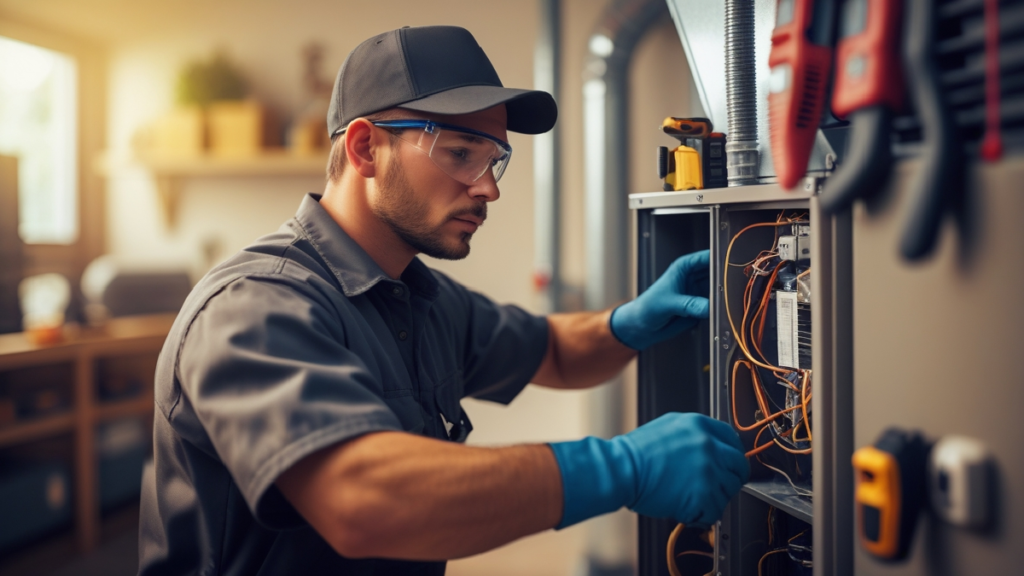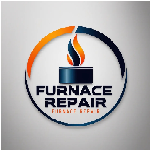Understanding Bryant Furnace Repair: A Friendly Guide for Homeowners
If you own a Bryant furnace, you understand how crucial it is to maintain a warm, cozy home, especially during the cold winter months. A reliable furnace keeps your living space comfortable and helps you avoid the discomfort and potential hazards of a malfunctioning heating system.

Bryant Furnace Repair However, like all appliances, Bryant furnaces can sometimes encounter issues that require troubleshooting and repairs. This comprehensive guide aims to equip homeowners with a friendly, step-by-step approach to diagnosing and fixing common problems with Bryant furnaces. Bryant Furnace Repair Whether you’re a DIY enthusiast eager to learn or a homeowner new to furnace maintenance, you’ll find practical, easy-to-follow advice to help you restore your system efficiently and safely.
Common Issues in Bryant Furnace Repair: Recognizing When Your Furnace Needs Attention
Furnace Not Turning On or No Heat
One of the most frustrating problems homeowners face is a furnace that refuses to start or produce heat. This issue can be caused by a variety of factors, including electrical problems, thermostat malfunctions, or safety switches that have been tripped.
Recognizing the early signs of these issues is essential because it can save you time, money, and prevent further damage to your heating system. If your Bryant furnace isn’t turning on at all, check whether the thermostat is set correctly and whether the circuit breaker has tripped. If these basic checks don’t resolve the problem, it’s time to explore deeper troubleshooting steps.
Inconsistent Heating or Uneven Temperatures
Bryant Furnace Repair If your home feels unevenly heated, with some rooms colder than others, your Bryant furnace might be struggling to distribute heat evenly. This problem can be caused by a dirty air filter, blocked or closed vents, or a malfunctioning blower motor. Bryant Furnace Repair Uneven heating can also be a sign of ductwork issues or a failing zone control system. Identifying these symptoms early allows you to address the root cause and restore comfort throughout your home.
Furnace Making Unusual Noises
Strange sounds such as banging, rattling, squealing, or grinding often indicate mechanical issues or loose components within your furnace. These noises should never be ignored, as they can be signs of serious problems like worn-out belts, loose fan blades, or failing motors. Addressing these issues promptly can prevent further damage and costly repairs down the line.
Frequent Cycling or Short Cycling
If your Bryant furnace turns on and off repeatedly, it’s called short cycling. This can be caused by thermostat issues, clogged filters, or overheating components. Short cycling not only reduces comfort but also increases energy consumption and shortens the lifespan of your furnace. Troubleshooting this problem quickly can help improve efficiency and extend your system’s service life.
High Energy Bills
Bryant Furnace Repair An unexpected increase in your heating bills can be a sign that your Bryant furnace is working harder than it should. Bryant Furnace RepairMalfunctioning parts, dirty filters, or poor system efficiency can cause your furnace to consume more energy. Identifying and fixing these issues can lead to significant savings and better system performance.
Step-by-Step Guide to Bryant Furnace Repair: Troubleshooting Common Problems
Step 1: Safety First — Turn Off Power and Gas
Before beginning any troubleshooting or repair work, safety must always come first. Turn off the power to your Bryant furnace by switching off the dedicated circuit breaker in your electrical panel. If your furnace uses natural gas, turn off the gas supply to prevent leaks or accidental ignition. Remember, working on a furnace involves potential hazards, so don’t skip this crucial safety step. Bryant Furnace Repair Ensuring the system is completely powered down protects you from electrical shocks and gas leaks, and it minimizes the risk of further damage to your system.
Step 2: Check and Replace the Air Filter
A dirty or clogged air filter is one of the most common causes of furnace problems. Locate the filter, typically found near the return vent or within the blower compartment. Remove the filter and inspect it visually.
If it appears dirty, dusty, or clogged, replace it with a new filter that matches the size and specifications recommended by Bryant. Regular filter replacement—every one to three months—is vital for maintaining good airflow, improving indoor air quality, and ensuring your furnace operates efficiently.
Step 3: Inspect the Thermostat Settings Bryant Furnace Repair
Sometimes, the issue is as simple as incorrect thermostat settings. Ensure your thermostat is set to “Heat” mode and that the temperature setting is higher than the current room temperature. Bryant Furnace Repair Check the batteries in your thermostat; replacing dead batteries can often resolve the problem.
If your thermostat is programmable, verify that the schedule is correct. If you suspect the thermostat is faulty, consider replacing it or upgrading to a more reliable model for better control and energy savings.
Step 4: Check the Circuit Breaker and Power Supply
Visit your electrical panel and locate the breaker switch dedicated to your furnace. Confirm that it is in the “On” position. If the breaker has tripped, reset it by flipping it to the “Off” position and then back to “On.” If the breaker trips again immediately, there may be an electrical fault or short circuit that requires professional diagnosis. Ensuring a stable power supply is fundamental to getting your furnace back in working order.
Step 5: Examine the Furnace’s Safety Switches and Limit Controls
Many Bryant furnaces have safety switches that shut down the system if certain conditions, such as overheating, are detected. Locate these switches—often found near the blower or on the furnace’s access panels—and ensure they are engaged and not tripped.
If you find a switch that has tripped, identify the underlying cause, such as a dirty filter or blocked vent, and resolve it before resetting the switch. Resetting safety switches without addressing the root cause can lead to recurring problems or safety hazards.
Step 6: Inspect the Pilot Light or Ignition System
If your Bryant furnace uses a pilot light, check whether it is lit. If it has gone out, follow the manufacturer’s instructions carefully to relight it safely. For furnaces with electronic ignition, listen for the clicking sound when the system attempts to ignite.Bryant Furnace Repair If the igniter appears cracked, damaged, or doesn’t glow, it may need replacement. Faulty ignition components can prevent the furnace from lighting and producing heat, so addressing this issue is essential for proper operation.
Step 7: Check the Blower Motor and Fan
When your furnace is running, listen for the blower motor. If it’s not operating, the issue could be a faulty motor, a blown fuse, or a problem with the relay. Inspect wiring connections for loose or damaged wires. If you’re not comfortable working with electrical components, it’s best to contact a professional HVAC technician. A malfunctioning blower motor can significantly reduce your furnace’s efficiency and heating capacity.
Step 8: Clean the Burners and Check for Gas Leaks
Dirty burners can cause ignition problems or inefficient combustion, leading to poor heating performance. Carefully clean the burners using a soft brush or vacuum to remove dust and debris. If you smell gas or suspect a leak, turn off the gas supply immediately and contact a licensed technician. Gas leaks are hazardous and require professional diagnosis and repair to ensure safety and proper system operation.
Additional Tips for Maintaining Your Bryant Furnace
Preventative maintenance is the best way to keep your Bryant furnace running smoothly. Schedule an annual professional inspection and tune-up, ideally before the start of the heating season. During these visits, technicians will clean components, check safety controls, lubricate moving parts, and verify system efficiency.
Regularly replacing your air filters—every one to three months—can prevent many common problems. Keep supply vents and registers unobstructed to promote proper airflow and even heating. Lastly, stay alert to any unusual noises, odors, or performance issues, and address them promptly to avoid costly repairs and extend your furnace’s lifespan.
Frequently Asked Questions About Bryant Furnace Repair
How do I know if my Bryant furnace needs repair?
Bryant Furnace Repair If your furnace isn’t producing heat, making strange noises, short cycling, or if your energy bills have suddenly increased, these are signs that your system may need troubleshooting or repairs. Regular maintenance can also help identify potential issues early, preventing costly breakdowns in the future.
Can I repair my Bryant furnace myself?
While some basic troubleshooting steps like replacing filters, resetting circuit breakers, or adjusting thermostat settings can be safely performed by homeowners, most repairs involving electrical components, gas systems, or mechanical parts should be handled by licensed professionals. Always prioritize safety and don’t hesitate to contact a certified HVAC technician for complex repairs.
How often should I have my Bryant furnace serviced?
It’s recommended to schedule professional maintenance at least once a year, ideally before the cold season begins. Regular inspections and tune-ups help ensure your furnace operates efficiently, safely, and can extend its overall lifespan.
What should I do if my furnace still doesn’t work after troubleshooting?
If you’ve followed all the basic troubleshooting steps and your Bryant furnace still isn’t functioning properly, it’s time to call in a qualified HVAC technician. They have the expertise, diagnostic tools, and experience needed to identify and fix complex issues safely and effectively.
Conclusion: Trust the Experts for Your Bryant Furnace Repair Needs
While this guide provides a friendly, step-by-step approach to troubleshooting common Bryant furnace issues, some repairs are best left to professionals. Don’t hesitate to contact a licensed HVAC technician if you’re unsure about any step or if the problem persists.
Regular maintenance and timely repairs will keep your Bryant furnace running efficiently, ensuring your home stays warm and comfortable when you need it most. Remember, safety should always come first — when in doubt, call the pros for your Bryant furnace repair needs.


Leave a Reply